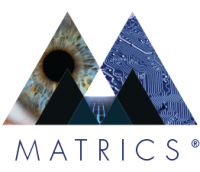HRL’s History of the Future Podcast Launches

HRL Laboratories, LLC, has announced the launch of its first podcast, HRL’s History of the Future, which will focus on the famed Hughes Research facility’s past and HRL’s present advancements in science and technology.
HRL Awarded DARPA Project AMEBA to Develop Man-Portable Low-Frequency Radio Antennas

HRL Laboratories, LLC, has received an award to participate in project AMEBA, the Defense Advanced Research Project Agency (DARPA) initiative to develop low-frequency radio transmission antennas that are vastly more compact and efficient than the massive existing arrays used to communicate in traditionally radio-denied conditions, such as with submerged submarines.
HRL Receives IARPA Award for Curved Infrared Image Sensors

HRL Laboratories, LLC, announced it has received an award from IARPA, within the Office of the Director of National Intelligence, to develop spherically curved short-wave (SWIR) and medium wave (MWIR) infrared image sensors.
HRL Laboratories Establishes Center for Additive Materials

Center will focus on breakthrough 3D printing technologies in ceramics and metallurgy. HRL Laboratories, LLC, has established a Center for Additive Materials to accelerate development of 3D printing of high-performance materials.
HRL Paper on Gallium Nitride Integrated Circuits Wins IEEE George E. Smith Award

The HRL team achieved the first gallium nitride (GaN) complementary metal-oxide-semiconductor field-effect-transistor technology, establishing superior GaN transistor performance harnessed in an integrated circuit. GaN could become the technology of choice for power conversion circuits currently made in silicon.
HRL and McGill Scientists Confirm Transcranial Stimulation Effects and Determine a Key Mechanism

Study shows transcranial learning effect not dependent on neuron firing rates. HRL Laboratories, LLC, researchers have determined how non-invasive transcranial direct current stimulation (tDCS) could increase performance of associative learning.
HRL Researchers Receive IARPA Award for Hybrid Forecasting Competition

HRL Laboratories, LLC researchers in the Center for Computational Network Intelligence, Information and Systems Sciences Laboratory received an award from IARPA to enter the Hybrid Forecasting Competition.
Metallurgy Breakthrough: HRL Engineers 3D Print High-Strength Aluminum, Solve Ages-Old Welding Problem Using Nanoparticles

HRL has made a breakthrough in metallurgy with the announcement that researchers have developed a technique for successfully 3D printing high-strength aluminum alloys—including types Al7075 and Al6061.
HRL High-Temperature Ceramics 3D-Printing Technology Selected as R&D 100 Finalist

HRL Laboratories, LLC, has been selected as a 2017 R&D 100 Finalist with the entry Additively Manufactured High-Temperature Polymer-Derived Ceramics.
HRL Receives NASA Award to 3D Print Ceramic Rocket Engine Components

HRL has received an award as part of NASA’s Space Technology Research, Development, Demonstration, and Infusion program to develop additive manufactured (3D-printed) ceramic rocket engine components.